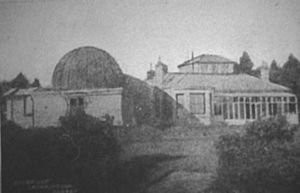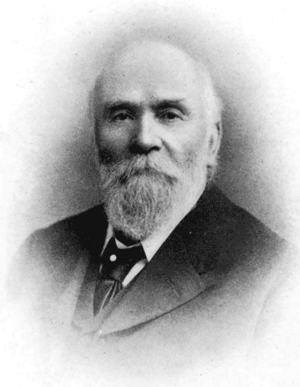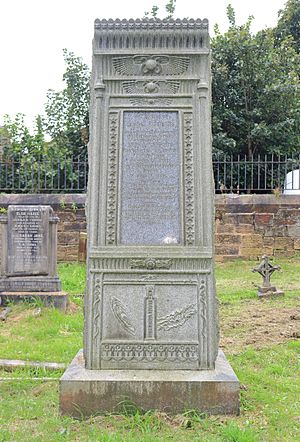Isaac Roberts facts for kids
Isaac Roberts (born in 1829, died in 1904) was a clever Welsh engineer and businessman. He became famous as an amateur astronomer. He was a pioneer in taking pictures of nebulae, which are giant clouds of gas and dust in space. This special type of photography is called astrophotography. Roberts was a member of important astronomy and geology groups. He even won a special award, the Gold Medal of the Royal Astronomical Society, in 1895.
Contents
Early Life and Career
Isaac Roberts was born in January 1829. His family lived in a place called Groes Bach, in Denbighshire, Wales. He spent some of his childhood there. Later, he moved to Liverpool, England.
In Liverpool, Isaac became an apprentice at an engineering company. This was in 1844. He worked there for seven years. He also studied at night school to learn more. By 1847, he became a partner in the company. When the main partners died, Roberts took charge of the business.
In 1859, Roberts started working as a builder. He was very successful. People knew him as one of the best engineers in the area.
Personal Life and Legacy
Isaac Roberts married Ellen Anne Cartmel in 1875. She passed away in 1901. Later that year, he married Dorothea Klumpke. She was also an astronomer.
Roberts died suddenly in 1904 when he was 75 years old. He was very proud of his Welsh heritage. He continued to speak the Welsh language throughout his life.
He left a lot of money to several universities. These included Cardiff University, Bangor University, and University of Liverpool. His tombstone says he spent his life searching for truth. It also says he tried to make others happy.
After his death, his wife Dorothea honored him. She helped create a special award. It is called the Prix Dorothea Klumpke-Isaac Roberts. This award encourages the study of nebulae and cosmic clouds. It is given out every two years.
A crater on the far side of the Moon is named after Isaac Roberts. It is called Roberts.
Interest in Astronomy

In 1878, Isaac Roberts had a telescope at his home. He lived in Rock Ferry, near Liverpool. At first, he used it just to look at the stars. A few years later, he started trying to take pictures of them. This became his main focus.
In 1883, Roberts began experimenting with astrophotography. He started with special camera lenses. He liked the pictures he took. So, he ordered a much bigger telescope. It was a reflecting telescope with a 20-inch mirror. He built an observatory building for it in 1885.
He placed photographic plates right at the telescope's main focus. This helped him capture more light. This method allowed him to make big steps in astrophotography.
In 1886, Roberts showed his first photographs. He showed them at the Royal Astronomical Society in Liverpool. He was the president of this group. His pictures showed, for the first time, huge clouds of gas and dust. These were in the Pleiades and Orion star clusters.
Astrophotography Advancements
Astrophotography needs very long exposure times. Sometimes it takes an hour or more. This is to capture faint objects on a photographic plate. Long exposures can even record objects that the human eye cannot see.
Isaac Roberts developed a special technique. It was called "piggyback" astronomical photography. He would mount a camera on a larger telescope. The larger telescope acted as a "guidescope." This setup kept the camera perfectly aimed. It stayed aimed even during the long exposure time as the Earth rotated.
Many people think Roberts's best work was a photograph of the Andromeda Galaxy. It was known as the Great Nebula in Andromeda back then. He took this picture on December 29, 1888. He used his 20-inch reflecting telescope.
This long exposure photograph showed something amazing. It revealed that the nebula had a spiral shape. This was very surprising at the time. Pictures like this changed astronomy forever. They showed the true shapes of nebulae and star clusters. This helped scientists develop new ideas about galaxies. Roberts published his amazing celestial photos in a large book. It was the first popular book of deep-sky astrophotography.
Roberts also invented a machine called the Stellar Pantograver. This machine could engrave star positions onto copper plates.
Today, the Science Museum (London) has Roberts's 20-inch reflecting telescope.
See also
 In Spanish: Isaac Roberts para niños
In Spanish: Isaac Roberts para niños
- Isaac Roberts' Observatory




